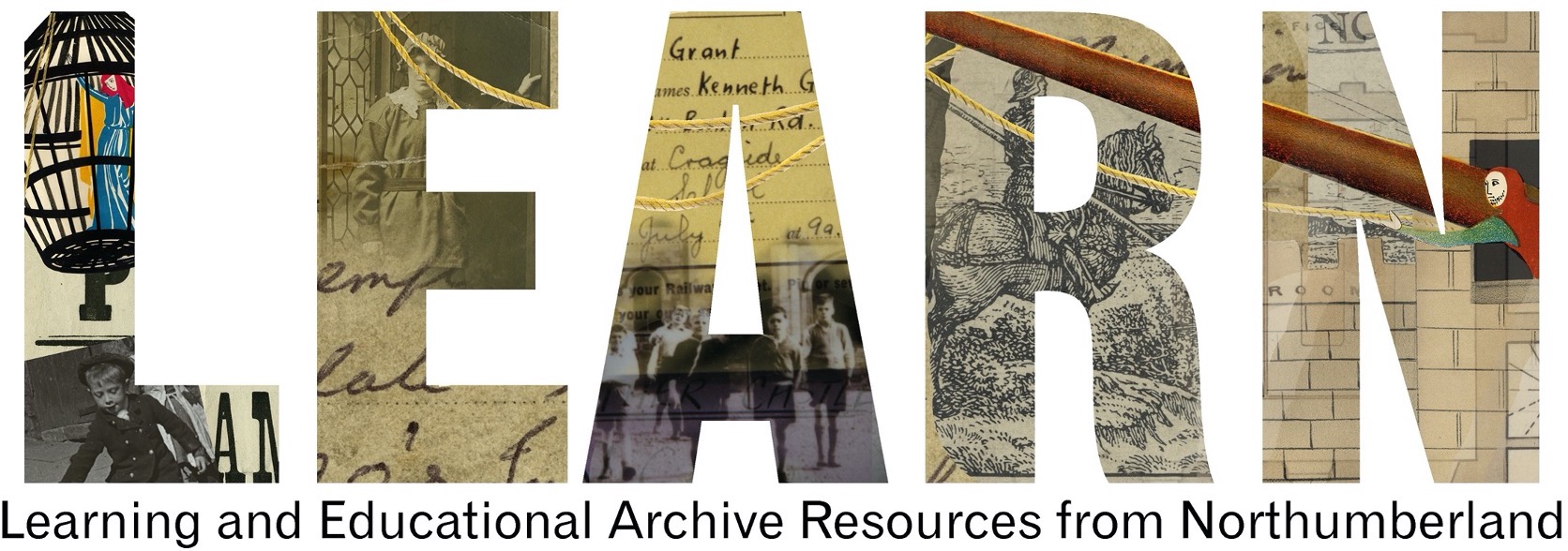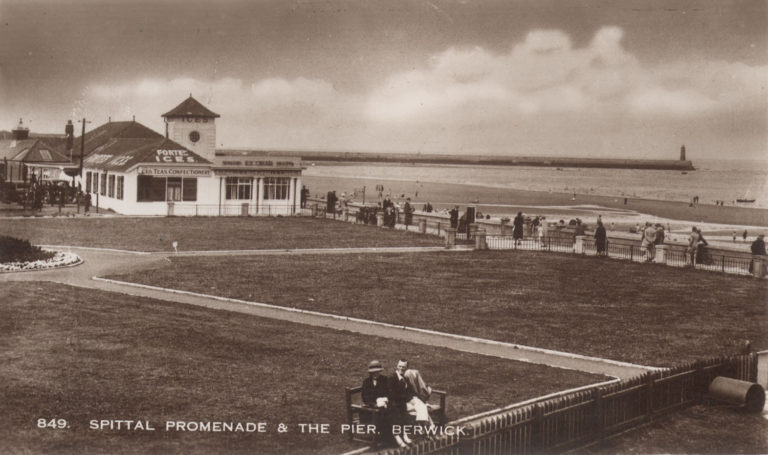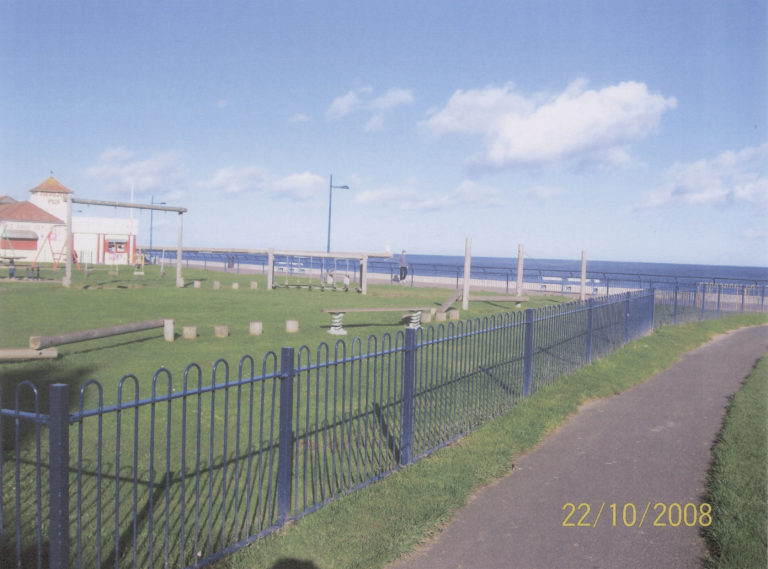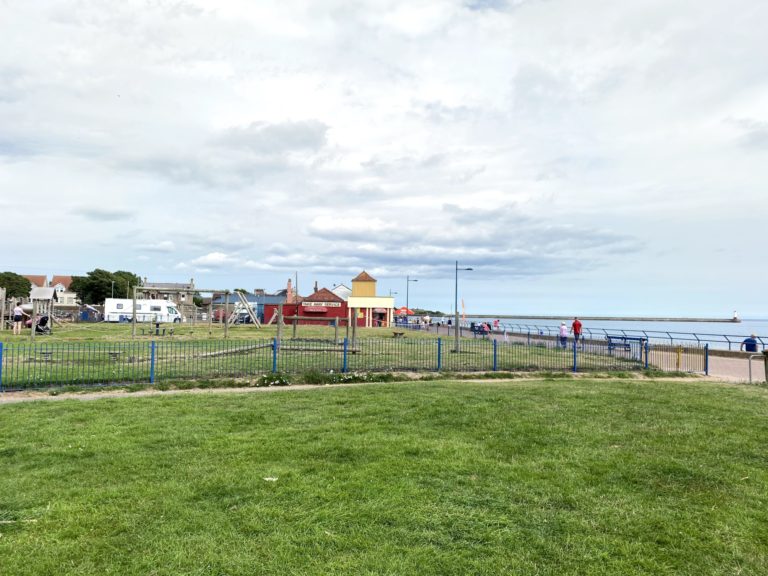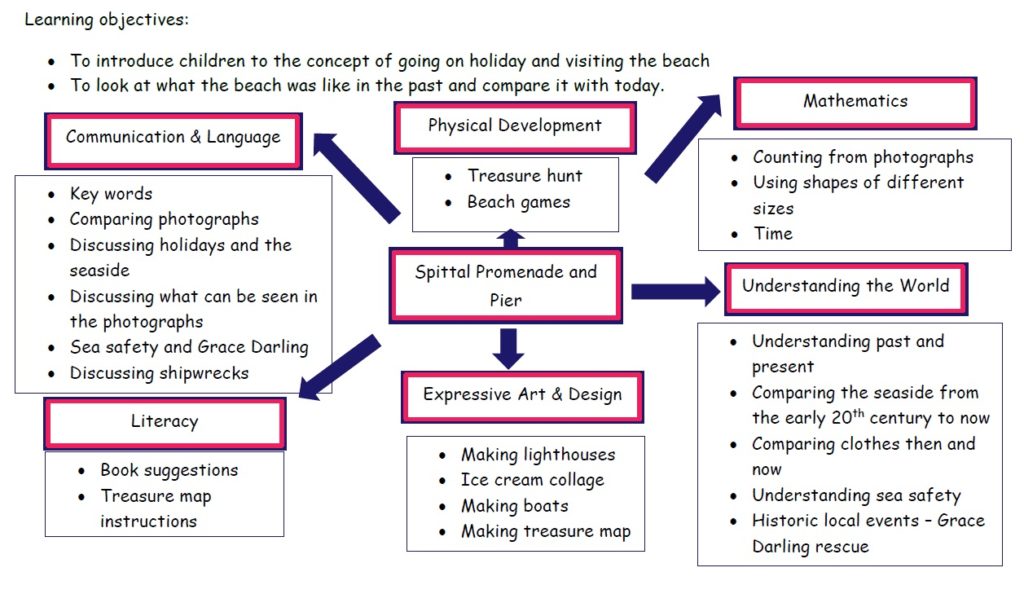The Seaside Through Time: Spittal Promenade and Pier, 1940s, 2008 & 2021
Reference: BRO 426/858 | Suggested age groups: EYFS, KS1 | Topic areas: At the Seaside, Then and Now
SPITTAL PROMENADE AND PIER
The first photograph was taken in the 1940s. It shows Forte’s Pavilion where people would go to buy ice cream or have a snack. It also shows the promenade and Spittal Beach.
The second photograph shows the children’s play park at Spittal, with the café and the amusements in the background. It was taken in October 2008.
The third photograph shows the same area in July 2021.
QUESTION PROMPTS



















KEY WORDS
📝 Pavilion – A building in a park or public place where people can change, get snacks or find entertainment.
📝 Promenade – A path along the seafront made for taking leisurely walks.
📝 Pier – A structure built out into the water as a place for boats to dock or for people to walk along, or to protect the seafront.
📝 Lighthouse – A tower with a flashing light for guiding ships and warning them of dangers in the water.
📝 Amusements – a place where you can play games on machines which work when you put money in them.
📝 Compare – To find things that are the same and different.
📝 Play park – An outdoor play area often with rides such as slides and swings.
READING SUGGESTIONS
📚 The Circus Ship by Chris Van Dusen
📚 The Pirates Next Door by Jonny Duddle
📚 We’re Going on a Treasure Hunt by Martha Mumford
📚 The Lighthouse Keeper’s Rescue by Ronda and David Armitage
📚 The Lonely Lighthouse by Lisa McNeill
📚Gracie the Lighthouse Cat by Ruth Brown
📚 Katie Morag and the New Pier by Mairi Hedderwick
ADDITIONAL ACTIVITIES
⚓ Talk about beach safety and lighthouses.
⚓ Tell the story of Grace Darling.
⚓ Visit the Grace Darling Museum.
⚓ Visit a lighthouse.
⛵ Talk about shipwrecks.
⛵ Hide items in a sand pit – this could be lost “treasure” from a shipwreck. Ask the children to identify the items by touch.
🗺️ Children hide an item somewhere in the room then make a treasure map to find it – this could be drawn, or the children could ask someone to write directions for them. Use the map to find the treasure.
🧰 Make a model of a lighthouse using recycled items or Lego.
🍦 Make ice cream cone collages using different sized coloured shapes such as circles and triangles.
⛵ Use different shapes to make boats.
🥏 Play beach games such as practicing throwing and catching with beach balls and frisbees.

